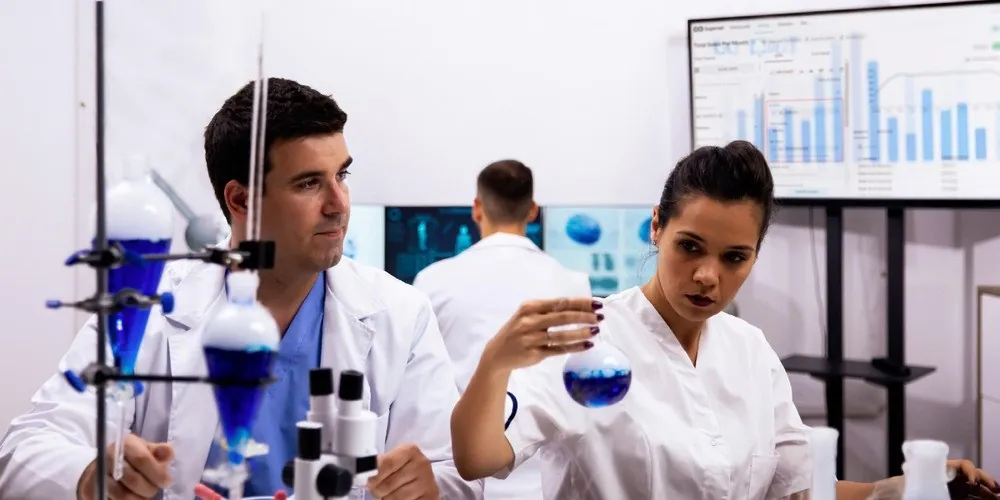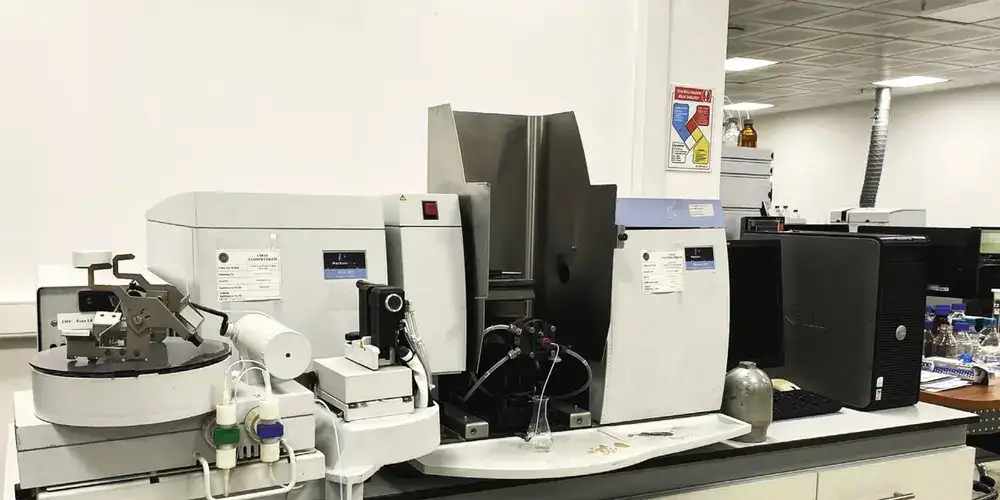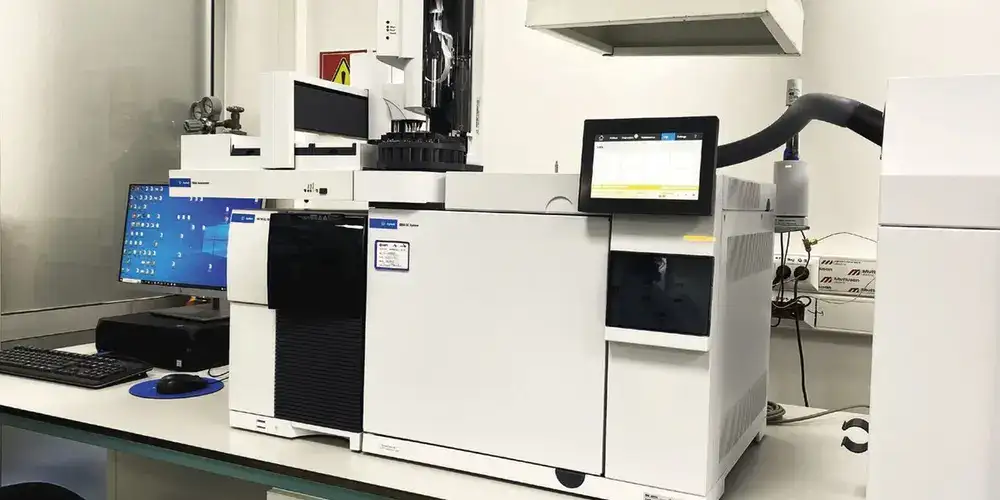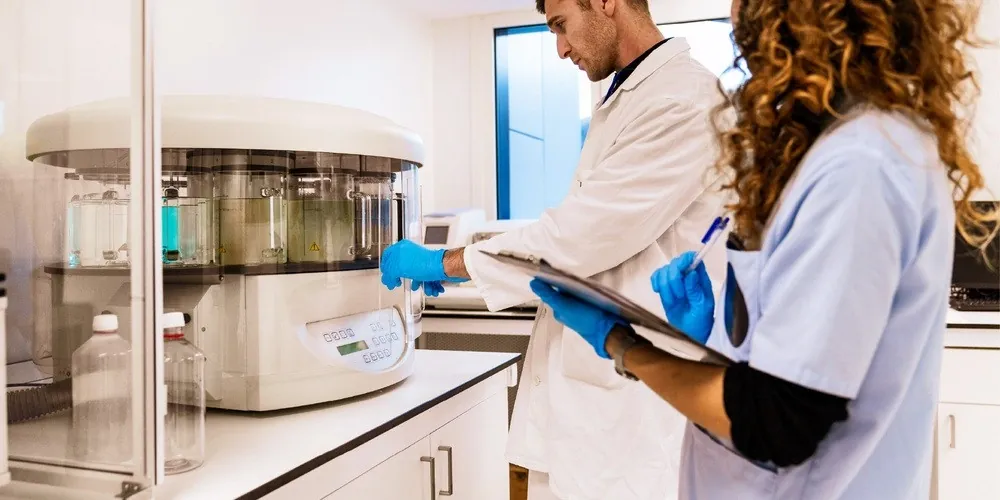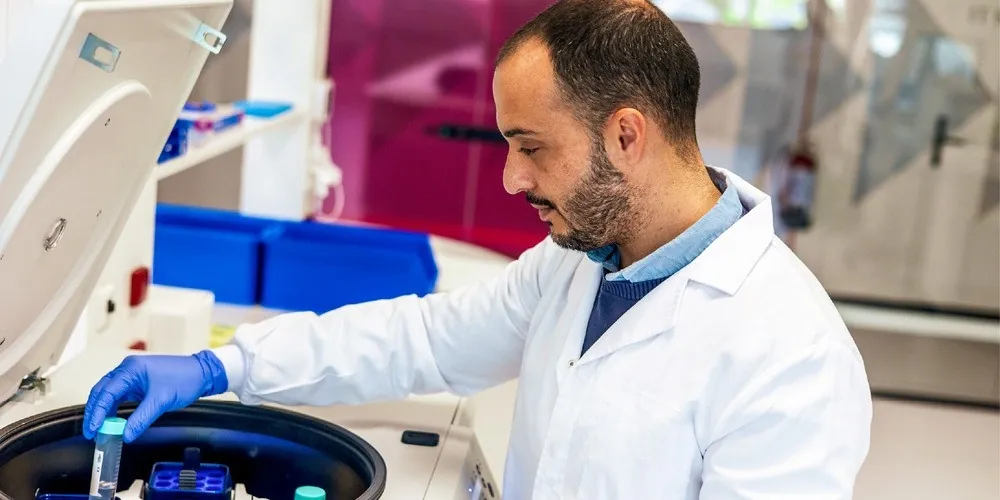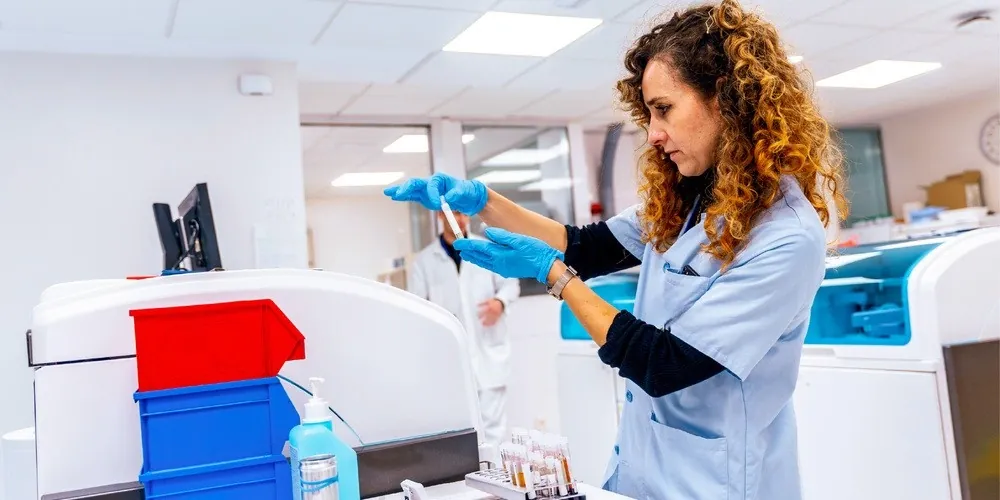R&D
Yıldız Technical University and Karub's R&D Collaboration
Yıldız Technical University (YTÜ) and Karub are taking significant steps in the field of R&D through their strong collaboration. This strategic partnership, made possible through university-industry collaborations with a university that has internationally accredited laboratory competencies, allows for the realization of various innovative projects. The expert team consisting of academics actively participates in every stage of the projects, forming the scientific foundation of the process.
This collaboration has greatly contributed to the innovative work of Karub and its affiliates in the field of R&D. Furthermore, the accreditations and project supports provided within the framework of the university-industry collaboration ensure that the projects receive broader support. This process not only contributes to the development of existing projects but also allows for the creation of new products.
The strong collaboration between Yıldız Technical University and Karub accelerates the R&D and Product Development processes, paving the way for innovative products that will add value to the sector. These efforts play an important role in the development of new product designs and prototypes, thus enabling quick responses to industrial needs. Product-focused projects ensure that the products launched in the market are superior in terms of quality and functionality.
This process will shape future technological advancements and help gain a competitive advantage in global markets. Moreover, the continuous innovation and improvement efforts during the product development stage further strengthen the collaboration between Karub and YTÜ, solidifying their competitive position in the industry.
Laboratory Capabilities within the Organization
Yıldız Technical University (YTU) Laboratory is a technology and innovation center dedicated to developing scientific knowledge generation and technological transformation opportunities, providing advanced research and analysis services. Located on the Davutpaşa Campus in Istanbul's Esenler district, opposite Teknopark, this laboratory offers a wide range of support to researchers. High-quality services are provided through various laboratory units, including elemental analysis, mass spectroscopy, thermal analysis, X-rays, electron microscopy, surface and pore characterization, particle characterization, spectroscopy, mechanical testing, and cell culture.
In particular, ICP-MS and HPLC-ICP-MS configurations enable qualitative and quantitative metal and heavy metal determinations, as well as speciation studies, with high accuracy and precision. High-magnification imaging is available for suitable samples, and reliable analysis results are obtained in complex matrices.
In addition to YTU's scientific research projects, the center supports R&D projects by collaborating with national and international universities, research institutions, and industrial organizations. Thanks to these collaborations, projects supported by organizations such as the European Union, TÜBİTAK, TÜBA and DPT are also carried out within the laboratory.
Academic Staff and Areas of Expertise
With the increasing population and developing technologies, human needs are rapidly changing. These changes bring about a growing need for functional materials. The "Advanced Functional Materials Research Group" conducts research in various fields to meet different needs. The research areas are grouped under three main headings:
- Advanced Inorganic Materials and Environmental Technologies
- Biomaterials and Health Technologies
- Food Technologies and Methods for the Evaluation of Food Wastes.

Prof. Dr. Mehmet Burçin PİŞKİN
Head of the Department of Bioengineering / YTU
Prof. Dr. Emek MÖRÖYDOR DERUN
Head of the Department of Chemical Engineering / YTU
Prof. Dr. Nurcan TUĞRUL
Vice Head of the Department of Chemical Engineering / YTU
Prof. Dr. Azmi Seyhun KIPÇAK
Vice Head of the Department of Chemical Engineering / YTU
Prof. Dr. Müge SARI YILMAZ
Faculty Member, Department of Chemical Engineering / YTU
Prof. Dr. Alptekin KISASÖZ
Faculty Member, Department of Metallurgical and Materials Engineering / YTU
Assoc. Prof. Dr. Azime ERARSLAN
Faculty Member, Department of Bioengineering / YTU
Assoc. Prof. Dr. Fatma Tuğçe ŞENBERBER DUMANLI
Faculty Member, Department of Bioengineering / YTU
Dr. Emre KARADUMAN
Postdoctoral Researcher, Department of Bioengineering / YTU
Lecturer Berk BAYTAROĞLU
Lecturer, Department of Bioengineering / Altınbaş University
Research Assistant Zekeriya Yaşar CÖMERT
Research Assistant, Department of Metallurgical and Materials Engineering / YTU
Research Assistant Deniz UYGUNÖZ
Research Assistant, Department of Chemical Engineering / YTU
Research Assistant Ayça ASLAN ARAS
Research Assistant, Department of Bioengineering / YTU
Research Assistant Enis Muhammet GÜL
Research Assistant, Department of Chemical Engineering / YTU
Research Assistant Zehra Özden ÖZYALÇIN GENÇ
Research Assistant, Department of Chemical Engineering / YTU
Research Assistant Deniz SEZGİN
Research Assistant, Department of Chemical Engineering / YTU
Research Assistant Bürge KÖSE IŞIK
Research Assistant, Department of Chemical Engineering / YTU
Research Assistant İpek GÜREL
Research Assistant, Department of Bioengineering / Haliç University
Melis ABAHUNİ UÇAR
PhD Candidate, Department of Bioengineering / YTU
Pelin ŞİŞLİ
PhD Candidate, Department of Bioengineering / YTU
Senanur BERKEM SOMAR
PhD Candidate, Department of Bioengineering / YTU
Outstanding Projects
The collaboration between Yıldız Technical University and Karub brings an innovative approach to research and development processes, and this partnership creates a significant impact in the industrial sector. The academic strength of Yıldız Technical University and Karub's industrial experience come together to create projects that offer sustainable and practical solutions to industry needs. With Karub's strong support, these projects develop innovative products built on scientific foundations and shaped by advanced testing and analysis. These projects not only enhance competitiveness in the sector but also make important contributions to environmental sustainability and economic efficiency.
Development of an Environmentally Friendly Composite Lubricant For Drilling Fluids
Drilling engineering uses drilling fluids, which are complex systems consisting of liquids, solids, and chemicals. These fluids are critical in minimizing wear on the drill bit and body, preventing excessive pull and torque problems during the drilling process. Specifically, the addition of lubricants to drilling fluids is a common strategy used to reduce friction, optimize drilling speed, and prevent sticking accidents. Traditionally, mineral and vegetable oils are the most commonly used types of lubricants. However, the biodegradability of mineral oils is limited, which presents a risk of environmental pollution.
The main goal of this study is to develop a composite lubricant with both environmentally friendly and high-performance characteristics. In line with this objective, various oils will be combined with specific formulations to reduce the lubrication coefficient, and tests will be carried out to determine the optimum oil quantity. Additionally, the feasibility of the esterification process will be evaluated to improve lubricant performance and control foam formation.
The environmental impacts of the composite lubricants developed during the research process will also be carefully analyzed, with the goal of obtaining an efficient and sustainable product that can be used in the energy sector. The biodegradability of these new lubricants used in oil drilling will minimize negative effects on the ecosystem while ensuring high performance that enhances the efficiency of drilling operations.
Petroleum Waste Remediation Project
Petroleum hydrocarbons are significant environmental pollutants that have negative effects on air, water, and soil ecosystems. This study aims to examine the composition of petroleum waste, its environmental and human health impacts, and to evaluate suitable methods for the rehabilitation of contaminated soils. Petroleum waste reduces soil fertility, threatens microbial diversity, decreases soil permeability, and negatively affects water infiltration capacity. Additionally, it infiltrates groundwater, contaminating water sources and inhibiting the development of photosynthetic organisms. In terms of human health, it is associated with serious health risks such as respiratory diseases, skin irritations, and carcinogenic effects.
Physical, chemical, and biological methods are applied for the removal of petroleum waste. While physical and chemical techniques can rapidly reduce pollution, they are costly and may lead to the formation of secondary toxic products. In contrast, bioremediation stands out as a more environmentally sustainable method. The biological degradation process carried out by microorganisms helps break down petroleum hydrocarbons, aiding in the restoration of the natural ecological balance of the soil. Bioremediation processes are supported by techniques such as biostimulation, bioaugmentation, and the use of genetically modified microorganisms. However, the resistance of certain hydrocarbon compounds to biological degradation is one of the main factors limiting the applicability of this method.
In the study, soil samples with different pollution levels were taken, and chemical and physical analyses were performed, including the examination of total petroleum hydrocarbons, heavy metal content, and microbial activities. Advanced techniques such as gas chromatography, mass spectrometry, and Raman spectroscopy were used for sample analysis. The findings show that petroleum waste causes severe damage to soil ecosystems and that biological remediation processes offer an effective strategy for mitigating this pollution. Specifically, the effectiveness of Bacillus species microorganisms in breaking down petroleum hydrocarbons suggests that bioremediation could be applied more widely in the future. However, the effectiveness of rehabilitation processes varies depending on the physical and chemical properties of the environment, the adaptation capacity of microorganisms, and the composition of petroleum waste.
Innovative Solar Energy Production Through the Use of Natural Dyes in Solar Cells
The depletion of fossil fuels and the increasing environmental issues have sparked a growing interest in renewable energy technologies. In this context, solar energy stands out as one of the most important renewable energy sources, and photovoltaic cells, used to convert solar energy into electricity, are rapidly advancing. Among these cells, dye-sensitized solar cells (DSSCs), which are known for being low-cost and environmentally friendly, have the potential to provide sustainable energy solutions.
The dyes used in DSSCs play a critical role in absorbing sunlight and generating electricity. However, the high cost and environmental impacts of traditional ruthenium-based dyes require the consideration of natural pigments as alternatives. In this study, a comparative analysis will be carried out on four different natural dye sources—blackberry (Rubus fructicosus), mulberry (Morus nigra), wild cherry (Prunus serotina), and raspberry (Rubus ideaus)—that can be used as sensitizers in DSSC systems.
First, the fruits will undergo a pre-treatment and be processed to extract natural pigments using an ultrasonic extraction method. The anthocyanin content of these pigments will be analyzed based on their pH levels. The characterization of the extracted pigments will be performed using analysis techniques such as UV-Visible Spectrophotometry, Fourier Transform Infrared Spectroscopy (FT-IR), and Raman Spectroscopy, and the pigment densities and structural properties will be compared.
Additionally, the adsorption of these natural dyes on the TiO2 semiconductor in DSSC systems and their stability under sunlight exposure will be examined, and the most efficient sensitizer will be identified. The project aims to offer an innovative approach that enhances environmental sustainability and reduces costs in DSSC systems, promoting the use of natural materials in the energy sector to generate sustainable and economic solutions. The findings may offer new perspectives on the use of natural dyes not only in DSSC technology but also in other renewable energy applications.
Investigation of the Thermoelectric Properties of Semiconductor Materials
Thermoelectric coolers provide an environmentally friendly alternative to traditional cooling systems and consist of modules made from n-type and p-type semiconductor alloys. These systems work by passing an electric current through the modules, and their efficiency depends on the structural properties of the semiconductor materials. Unlike conventional cooling systems that use compressors, condensers, and chlorofluorocarbon (CFC)-based fluids, thermoelectric coolers offer environmentally friendly and maintenance-free solutions using direct current power sources, semiconductor materials, and cooling blocks.
This project aims to produce high-efficiency thermoelectric batteries for use in thermoelectric coolers. First, the eutectic structures of the thermoelements to be used will be studied, and the most suitable semiconductor elements will be determined. High-performance n-type (Bi, Te, Se) and p-type (Sb, Te, Bi) alloys will be purified, and Bi₂Te₃, Sb₂Te₃, and Bi₂Se₃ alloys will be obtained through crystal growth in a vacuum environment. The produced materials will be optimized with Nd and Cd additives, and their structural and thermal analyses will be conducted using Differential Thermal Analysis-Thermogravimetry (DTA-TG), Scanning Electron Microscopy (SEM), and X-ray Diffraction (XRD).
Subsequently, thermoelectric batteries will be produced from p-type [Sb₂Te₃ + Bi₂Te₃] and n-type [Bi₂Te₃ + Bi₂Se₃] alloys, and their efficiencies, power consumption, and cost analyses will be evaluated. These batteries will provide energy-efficient, environmentally friendly, and long-lasting solutions, offering an alternative to traditional cooling systems. These systems, which do not require harmful gases, will have significant advantages. Moreover, the production of thermoelectric semiconductors will allow for substantial gains in the energy sector, the environment, and technology, reducing external dependency.
This project presents an innovative solution in the field of thermoelectric materials, offering environmental sustainability and economic benefits.
